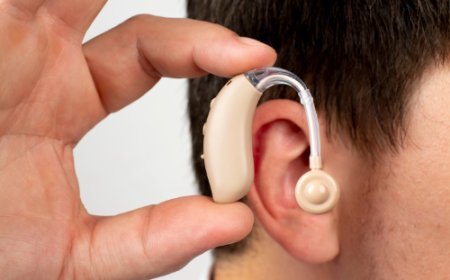Spiral Fracture Surgery: 7 Essential Facts You Need to Know

Introduction
A spiral fracture is a serious type of bone break that occurs when a twisting force is applied to a limb. These fractures are commonly seen in sports injuries, falls, or accidents and often require medical intervention. Spiral fracture surgery is necessary when the bone is severely misaligned or unstable. This procedure helps restore proper bone structure, allowing for effective healing and function.
In this article, we will discuss everything you need to know about spiral fracture surgery, including the procedure, recovery process, risks, and post-surgery care.
What Is a Spiral Fracture?
A spiral fracture occurs when a long bone, such as the femur, tibia, or humerus, breaks due to a twisting motion. This type of break creates a helical (spiral) pattern along the bone, making it difficult to heal without surgical intervention in many cases.
Common Causes of Spiral Fractures
-
Sports injuries (e.g., skiing, football, basketball)
-
Slips and falls
-
Car accidents
-
Workplace injuries
Symptoms of a Spiral Fracture
-
Severe pain at the fracture site
-
Swelling and bruising
-
Inability to bear weight or move the affected limb
-
Noticeable deformity or misalignment
When Is Surgery Needed for a Spiral Fracture?
While some minor spiral fractures may heal with a cast or splint, surgery is often required when:
-
The fracture is displaced (bone pieces have shifted out of place)
-
The break occurs in a weight-bearing bone (e.g., femur, tibia)
-
There is severe pain and instability
-
The fracture has caused damage to surrounding nerves or blood vessels
Spiral Fracture Surgery Procedure
1. Diagnosis and Pre-Surgical Preparation
Before surgery, doctors perform X-rays, CT scans, or MRIs to assess the severity and exact location of the fracture. The patient is then prepared for surgery by receiving anesthesia and undergoing preoperative tests.
2. Types of Spiral Fracture Surgeries
-
Open Reduction and Internal Fixation (ORIF): The most common procedure, where surgeons realign the bone and secure it with plates, screws, or rods.
-
External Fixation: Used for severe cases, where an external frame stabilizes the bone while it heals.
-
Intramedullary Nailing: A metal rod is inserted into the bone's center to provide stability.
3. Post-Surgical Recovery
Recovery depends on the severity of the fracture and the surgical technique used. Patients typically undergo:
-
Pain management with medications
-
Physical therapy to regain strength and mobility
-
Follow-up X-rays to monitor bone healing
Recovery Timeline for Spiral Fracture Surgery
Week 1-3:
-
Rest and limited movement
-
Pain and swelling management
-
Use of crutches or mobility aids
Week 4-8:
-
Start physical therapy
-
Gradual weight-bearing activities
Month 3-6:
-
Increased mobility and strength
-
Return to light activities
Month 6+:
-
Full recovery, depending on injury severity
-
Clearance for high-impact activities (if approved by the doctor)
Potential Risks and Complications
Although spiral fracture surgery is highly successful, some risks include:
-
Infection at the surgical site
-
Blood clots
-
Delayed bone healing
-
Nerve damage
How to Care for Yourself After Surgery
-
Keep the surgical area clean and dry
-
Follow prescribed physical therapy exercises
-
Eat a nutrient-rich diet to promote bone healing
-
Avoid high-impact activities until cleared by your doctor
Meta Description
Learn everything about spiral fracture surgery, including the procedure, recovery, risks, and post-care. Get expert tips for a smooth recovery from Er of Watauga.
Short Description
Discover essential facts about spiral fracture surgery, including types, recovery time, risks, and post-operative care. Stay informed with Er of Watauga!
Captions
-
"Understanding spiral fracture surgery: What you need to know."
-
"Recovery tips after spiral fracture surgery for a smoother healing process."
-
"Types of surgical procedures used to fix a spiral fracture."
Alt Text
-
"A doctor reviewing an X-ray before performing spiral fracture surgery."
-
"Patient undergoing physical therapy after spiral fracture surgery."
-
"A close-up of a surgical procedure to repair a spiral fracture."
FAQs
1. How long does it take to recover from spiral fracture surgery?
Recovery varies, but most patients heal within 3 to 6 months, depending on the fracture severity and rehabilitation process.
2. Is spiral fracture surgery painful?
Pain is managed with medications and gradually decreases over time as healing progresses.
3. Can a spiral fracture heal without surgery?
Minor spiral fractures may heal with a cast or splint, but surgery is often needed for severe or misaligned breaks.
4. What activities should be avoided after surgery?
Avoid running, jumping, and heavy lifting until your doctor clears you for normal activities.
5. When can I start walking after spiral fracture surgery?
Walking with crutches may be allowed within the first few weeks, but full weight-bearing is typically introduced after several weeks to months.
What's Your Reaction?





























































